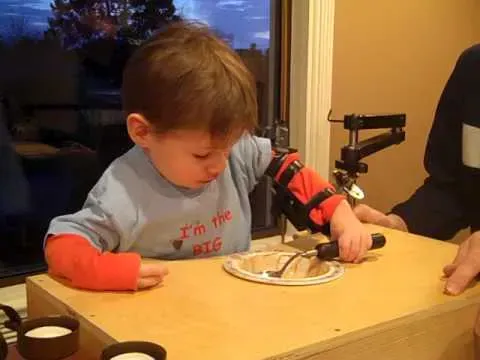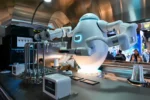Welcome to the forefront of innovation in assistive technology, where human-robot interaction takes on a meaningful role in daily life. Within the walls of the Collab Lab, a dedicated team is on a mission to transform the way we approach assistive feeding—an essential service for nearly two million Americans who need help with eating. For decades, attempts to create effective assistive eating devices have faced significant hurdles, particularly in adapting to the diverse types of food people enjoy. In response, our team has developed the Kiri-Spoon, a groundbreaking utensil that marries mechanical engineering with user-centered design. Here, we delve into the journey of creating this innovative tool, highlighting the collaborative efforts of students, researchers, and the very individuals it aims to serve.
| Category | Details |
|---|---|
| Lab Name | Collab Lab |
Understanding Assistive Feeding Technology
Assistive feeding technology helps people who need extra support while eating. Many individuals, especially those with disabilities, require devices that can assist them during mealtime. This type of technology has been around since the 1970s, and it aims to improve the quality of life for nearly 2 million Americans who struggle with eating independently. By creating tools that help with feeding, we can help these individuals enjoy meals with more ease and dignity.
The challenge with assistive feeding devices is that they often have difficulty picking up various types of food. While they may work well with specific foods, most people eat a wide variety of meals that come in different shapes and sizes. This inconsistency can make it frustrating for users, leading many to abandon these devices altogether. Therefore, creating a reliable and adaptable solution is crucial to helping people eat better.
The Innovation Behind the Kiri-Spoon
The Kiri-Spoon is an exciting innovation designed to improve mealtime for individuals who need assistance. Unlike traditional feeding devices, the Kiri-Spoon resembles a regular spoon but has unique mechanical features. Its design allows the spoon to change its shape and hold food securely, making it easier for users to enjoy their meals without assistance. This adaptability is essential for addressing the challenges faced by those with mobility limitations.
When the Kiri-Spoon is in its relaxed state, it functions just like an ordinary spoon, making it comfortable for users to hold and use. However, when activated, it pinches to secure food, preventing it from slipping off. This clever design allows for greater flexibility and success in mealtime, which can boost the confidence of users. By focusing on user-friendly solutions, the Kiri-Spoon aims to transform the experience of eating for many individuals.
Collaboration with Stakeholders
Collaboration is a key part of the development process for assistive technology like the Kiri-Spoon. The team behind this project includes not only engineers but also stakeholders—adults with mobility limitations who will use the device. By working closely with these individuals, the team gathers valuable feedback on what works and what doesn’t. This helps ensure that the final product truly meets the needs of those it is designed for.
Engaging with stakeholders provides insights that can guide modifications and improvements. For example, users might suggest changes to the Kiri-Spoon’s shape or size based on their personal experiences. This feedback loop creates a more effective and user-friendly device, demonstrating the importance of listening to the voices of those who will benefit from the technology.
Meet the Team Behind Kiri-Spoon
The development of the Kiri-Spoon involves a talented team of students and scholars. Under the guidance of a graduate student named Maya, two mechanical engineering juniors, Casey and Brandon, contribute their skills in design and testing. Each member plays a vital role in bringing this innovative tool to life. Their teamwork illustrates the collaborative spirit that is essential in engineering projects.
Additionally, a postdoctoral scholar named Heramb provides mentorship and support to the team. This blend of experience and fresh ideas among team members enhances the creative process. By working together, they are not only learning from each other but also ensuring that the Kiri-Spoon meets the highest standards of functionality and user satisfaction.
The Role of Virginia Tech in Engineering Solutions
Virginia Tech is at the forefront of engineering innovation, particularly in the field of assistive technology. The university’s mechanical engineering program emphasizes real-world applications, encouraging students to engage in meaningful projects that can have a profound impact. The Kiri-Spoon project exemplifies this mission, as it combines academic learning with community service.
By focusing on the needs of users and incorporating their feedback, Virginia Tech students are developing solutions that truly matter. This approach not only enhances their educational experience but also fosters a sense of responsibility toward society. The work being done in the Collab lab reflects the university’s commitment to engineering advancements that improve people’s lives.
Future Directions for Assistive Technology
As technology evolves, the future of assistive feeding devices looks promising. Innovations like the Kiri-Spoon pave the way for more advanced tools that can accommodate even more diverse eating needs. Researchers and engineers are continually exploring new designs, materials, and technologies that can enhance the functionality of these devices, making them more accessible and user-friendly.
Looking ahead, the goal is to create assistive technologies that not only help individuals eat independently but also foster social interactions during mealtimes. By improving the usability and effectiveness of feeding devices, we can empower people with mobility limitations to enjoy meals with family and friends. The future of assistive technology is bright, with endless possibilities for improving lives.
Frequently Asked Questions
What is the Collab Lab focused on?
The Collab Lab specializes in human-robot interaction, particularly in developing assistive feeding devices for individuals who need help with eating.
Why do assistive eating devices often fail?
Many assistive eating devices struggle because they can only pick up specific types of food, leading users to abandon them when meals vary.
What is the Kiri-Spoon?
The Kiri-Spoon is a unique mechanical spoon that changes shape to hold food, designed to assist people with mobility limitations while eating.
How does the Kiri-Spoon work?
In its normal state, the Kiri-Spoon looks like a regular spoon, but it can pinch food when activated, making it easier to use.
Who is involved in developing the Kiri-Spoon?
The project includes undergraduate students, a graduate student, and a postdoctoral scholar, all collaborating to design and test the Kiri-Spoon.
How has feedback influenced the Kiri-Spoon design?
Feedback from users at The Virginia Home has guided improvements and adjustments to ensure the Kiri-Spoon meets the needs of its users.
What is the mission of the Virginia Tech mechanical engineers?
Their mission focuses on engineering solutions, involving students, and prioritizing the needs of stakeholders who will use the assistive devices.
Summary
The Collab lab focuses on helping people who need assistance with eating, as nearly 2 million Americans face this daily challenge. Traditional assistive devices often struggle with various foods, leading to user frustration. To solve this, the team developed the Kiri-Spoon, a special spoon that can change shape to hold different types of food. Over the past year, they tested it with feedback from users at The Virginia Home. This collaborative project involves students and researchers, emphasizing the importance of designing tools that truly help people with mobility limitations.






